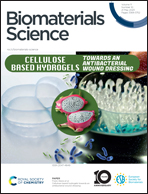Zn–Sr-sintered true bone ceramics enhance bone repair and regeneration
Abstract
Bone defects are one of the toughest challenges faced by orthopedic surgeons worldwide, especially at critical sizes, which are caused by severe trauma, malignancy, or congenital disease. The ideal bone tissue-engineered scaffold for bone regeneration is the one that has good osteoconductivity, osteoinductivity, pore structure, and antibacterial properties. Metal ions have been recognized in recent years to be essential regulators of bone metabolism, and they are widely used for bone tissue engineering. In particular, zinc ions are of interest because of their ideal biocompatibility, osteogenesis-promoting properties, and antibacterial properties. Moreover, the dual role of strontium (Sr) in promoting osteogenesis and inhibiting osteolysis provides academic support for Zn–Sr co-doped scaffolds. Based on true bone ceramics (TBC), Zn–Sr-sintered scaffolds with good pore structures were prepared using immersion–calcination. The biocompatibility, cell adhesion, osteogenic properties, and antibacterial activity of Zn–Sr-sintered TBC scaffolds in bone marrow mesenchymal stem cells (BMSCs) are superior to those of control TBC scaffolds. The Zn–Sr-sintered TBC scaffold was used to repair rat cranial defects. Its good in vivo repair performance was confirmed by osseointegration and inward bone growth compared with that of the control TBC scaffold. Zn0.25Sr0.20-TBC is an ideal material for bone repair because of its good biocompatibility and favorable in vitro osteogenic properties.



 Please wait while we load your content...
Please wait while we load your content...